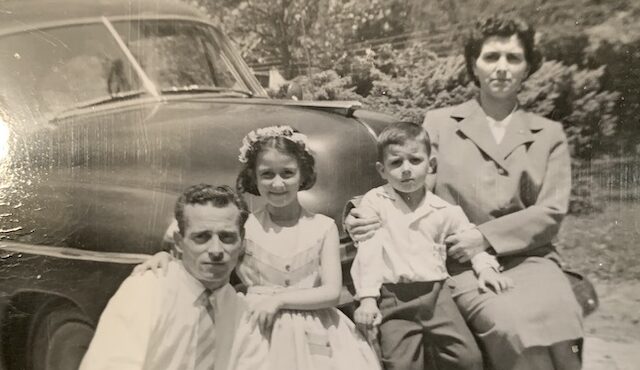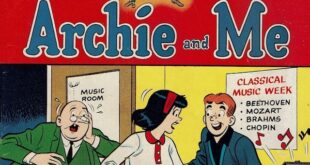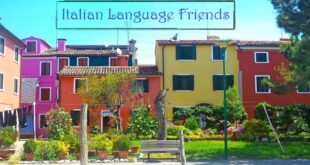As I grew up in Highwood, visiting my friends was like being in my own home: the same foods were served, I sat on the same style furniture, and I saw pictures of relatives on their walls posted in a fashion similar to mine at home. The promotional calendars of the local Italian insurance firm hung right next to the pictures of the pope in all our kitchens. My friends’ parents spoke broken English with the same Italian accent as my parents. They imposed identical rules and doled out similar discipline. We all saw each other at Sunday Mass, after which the boys accompanied their fathers to the local coffee shop while our mothers and sisters went back home to cook the Sunday family meal. The whole lot of us looked and acted alike, our similarities even more pronounced because we Italians all knew each other’s business.
The only wrinkle to this homogeneity was Fort Sheridan. The children from the Fort joined us in school and in play. They provided a different look and a diverse way of doing, thinking and living. Their food was distinct from ours as were their homes and daily routines. The Fort introduced us to people of unfamiliar ethnicities, backgrounds and beliefs. As children, we easily accepted and adapted as we grew and melded together. Yes, the Fort provided jobs for our parents, but it also delivered valuable exposure for us children, Italian Immigrants, to a view of diversity. The Fort reflected the evolving American landscape.
For the first 10 months in Highwood, we lived in makeshift living quarters that shared a common wall with my aunt’s garage in her back lot. They had constructed a space with a small kitchen, a small common area, and a bathroom with a pedestal sink … but absent a bathtub or shower — we used my aunt’s bathtub/shower when needed. My parents slept on a pullout couch, while my sister and I slept on cots that were folded and stored upright against the wall when not in use. With the couch folded and back in place, the sleeping area also served as the living room. The total space was much like the square footage of our house that we had just left in Italy and provided a comfortable area in which to entertain fellow immigrants. I remember my fifth birthday, opening my presents in the middle of the pulled-out exposed couch bed, surrounded by my newly formed friends, while many people stood around me clapping as I showed them my birthday items.
My father worked as a carpenter Monday through Friday in Fort Sheridan. He loaded his self-made, wooden toolbox, filled to the brim with carpentry tools, onto his shoulder and walked the 10 blocks to the Fort. On Saturdays, he walked to fellow Italians’ homes to help them with their construction projects or repairs. If no side job presented itself on a particular Saturday, he would work as a landscaper. My father accepted whatever work he could find to expediently meet loan payments that had accrued because of our immigration. To supplement the income, my mother worked from home as a seamstress and also pressed shirts for business executives from an affluent suburb just to our north. By working at home, she wasn’t as exposed to American ways, their language, or their world, so her immersion wasn’t as immediate as my father’s needed to be.
My sister was allowed only one day to acclimate. Our arrival date of Dec. 11 was a Sunday. She entered St. James’s kindergarten on Tuesday, Dec. 13. I remember holding my mother’s hand at the bottom of the long flight of concrete steps that led to the kindergarten doors and watching my sister ascend in her pink snowsuit. When she reached the top, she was greeted by Sister Cornita, the teacher, and Helen, the church’s secretary, who coordinated all church and school matters for immigrants. I would not need to walk up those stairs for another 10 months.
After eight months of sharing the garage behind my aunt’s house, we moved to a rental house that afforded us much more space. It was located one block from my aunt. We rented the upstairs of the two-flat. The landlord lived on the first floor. Two bedrooms, a dining room and living room, and a galley kitchen now gave us room to comfortably move without always running into each other. That bathroom did have a bathtub. The house sat on a large lot and was tucked at the back of the property. The front yard was spacious, but the backyard was almost nonexistent. Located at the end of a street block, ours was the last house before a steep descent to a sparsely wooded natural area with a shallow lagoon. That area would eventually be leveled, the lagoon drained, trees downed, and the shrubs cleared for construction of houses that sit there today. Our stone house was very sturdy, but the windows were of inferior quality, which resulted in quite a draft. In the deep winter months, the windows were usually caked with ice. Our location next to a swampy area meant mice would frequently enter the house, seeking food and warmth. I remember my father’s daily task, in which I followed him but didn’t participate; it dealt with emptying and resetting the traps.
Two years at that location led to a better-suited home across the street from the church and school. In fact, the church owned the property, and thus in 1958 the parish became our landlord. We paid $70 a month. It was a single-family house, which gave us even more space. My sister and I finally had our own bedrooms! We also had a basement where we could play! The basement was large enough to accommodate my father’s and mother’s workshops as well.
We spent seven years at this location, which allowed my parents to save enough money to submit a down payment on a house in Highland Park, the adjacent town south of Highwood. In 1965, my parents bought that house for $18,000. They didn’t require a bank loan; rather they borrowed the additional money they needed from an Italian immigrant. Giovanni had lived in America for years, working as a landscaper at many properties. He had accumulated a small fortune that he gladly loaned to fellow Italian immigrants at a fraction of the interest rate charged by banks.
 Fra Noi Embrace Your Inner Italian
Fra Noi Embrace Your Inner Italian







This is the best memoir I have read in a very long while. I grew up in Highland Park at that same time. If you have a mailing list I would like to be added to it. You’re a talented writer!
Hi Carolyn,
Thank you for your kind words…much appreciated. I don’t have a mailing list, but all of my stories published to date can be read in Fra Noi.
Best,
Maurizio
Thank-you for sharing your history. My great-uncle Joseph Bonacorsi and my grandfather, Celeste Bettini, both lived in Highland Park and Highwood respectively. They left their tiny villages of Vesale and Casine near Sestola, in the province of Modena, in the 1920s. My grandfather was a veteran of the Italian army in the war against Austria, which was World War I. He came home after the war to poverty and decided to immigrate. My Dad went to Saint Ambrose College in Davenport, Iowa, and that is where we grew up. But we always visited Grandpa and Great-Uncle Joe in Illinois. I wish I knew more about the Modenese immigrants who lived in Highwood and Highland Park. I did buy the book: Houses with Names: The Italian Immigrants of Highwood, Illinois by Adria Bernardi. But haven’t had a chance to read it yet. Sincerely, Colleen Bettini, New Berlin, Wisconsin